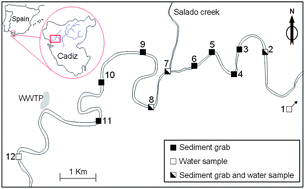Tracking sewage derived contamination in riverine settings by analysis of synthetic surfactants
Abstract
A study has been made of the presence and reactivity of the most commonly used

* Corresponding authors
a
Department of Physical-Chemistry, Faculty of Marine and Environmental Sciences, University of Cadiz, Campus Rio San Pedro, Puerto Real, Cadiz, Spain
E-mail:
pablo.lara@uca.es
Fax: +34 956016040
Tel: +34 956016159
b Department of Geotechnical Engineering and Geoscience-UPC, Barcelona, Spain
A study has been made of the presence and reactivity of the most commonly used

 Please wait while we load your content...
Something went wrong. Try again?
Please wait while we load your content...
Something went wrong. Try again?
C. Corada-Fernández, P. A. Lara-Martín, L. Candela and E. González-Mazo, J. Environ. Monit., 2011, 13, 2010 DOI: 10.1039/C1EM10150A
To request permission to reproduce material from this article, please go to the Copyright Clearance Center request page.
If you are an author contributing to an RSC publication, you do not need to request permission provided correct acknowledgement is given.
If you are the author of this article, you do not need to request permission to reproduce figures and diagrams provided correct acknowledgement is given. If you want to reproduce the whole article in a third-party publication (excluding your thesis/dissertation for which permission is not required) please go to the Copyright Clearance Center request page.
Read more about how to correctly acknowledge RSC content.
 Fetching data from CrossRef.
Fetching data from CrossRef.
This may take some time to load.
Loading related content
